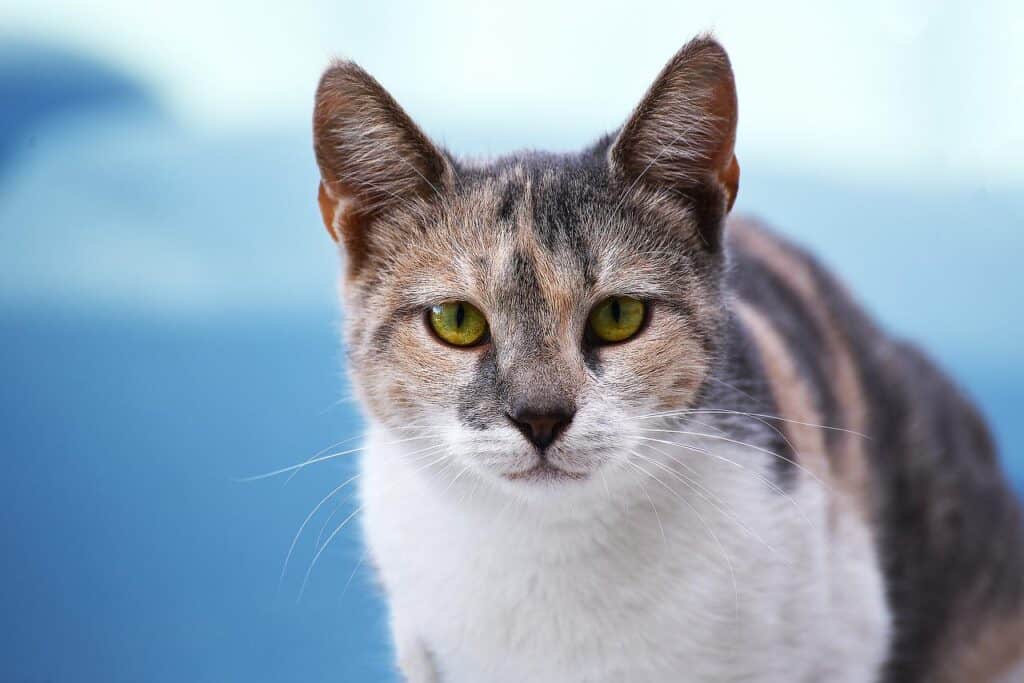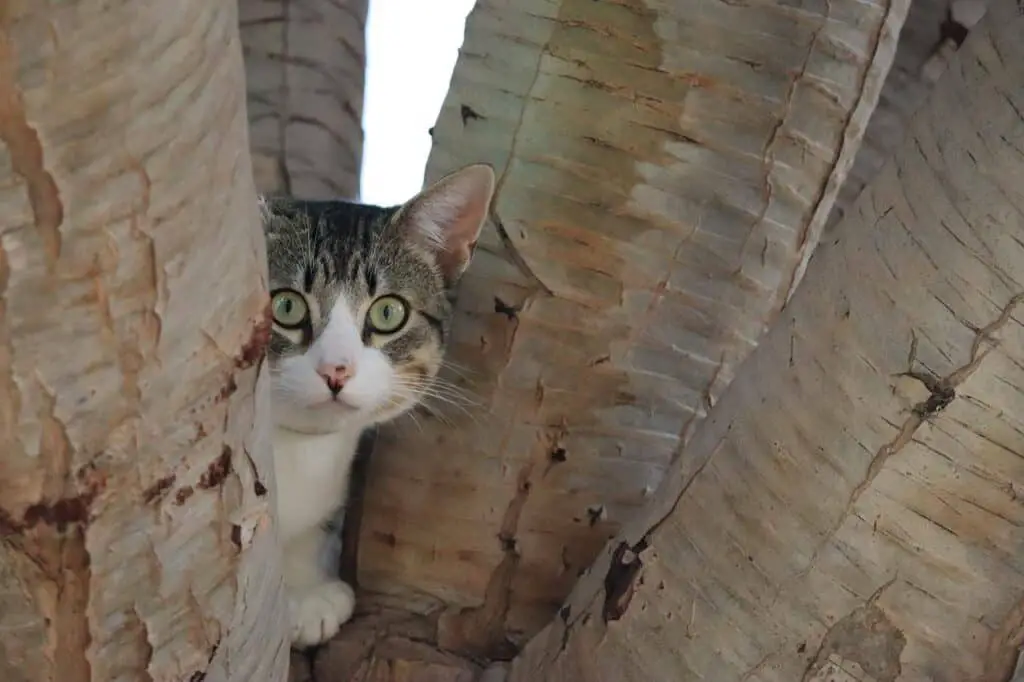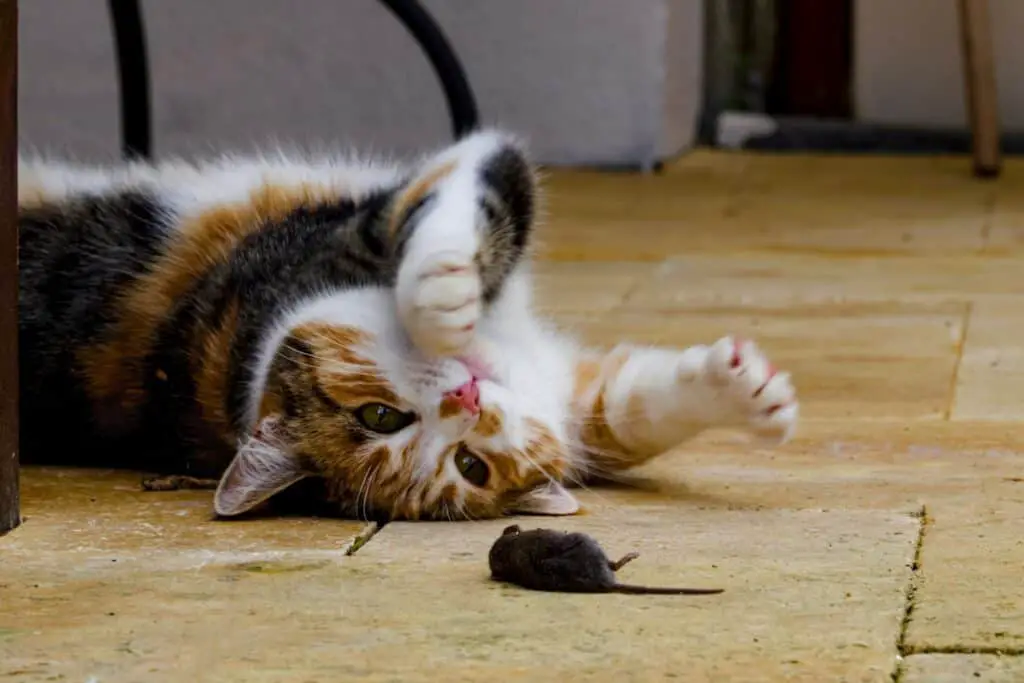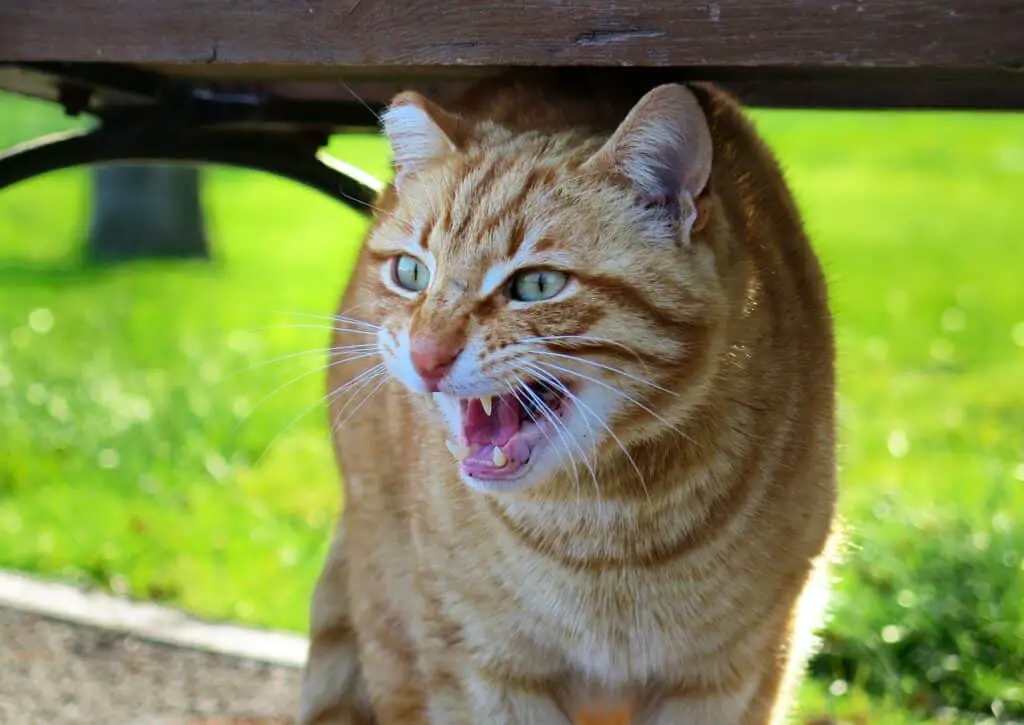If you’ve ever been around cats, you will have noticed their tendency to stare at you.
As puzzling as cats seem, you can learn a lot about their state of mind by observing their body language. Their staring behavior is one of those things, so let’s talk about it.
Cats stare for different reasons, but often it is because they are curious, anxious or because they’re showing affection. To figure out why a cat stares at you, consider your relationship with it and the situation you’re in. The cat’s body language is another give-away about why they stare.
Thankfully, you don’t need to engage in a staring contest with your cats to understand what they’re trying to tell you. We’ve listed down the most common reasons cats will stare and what it means.
Staring is standard cat-communication
Cats are masters of subtle body language. Between each other, they almost exclusively communicate in a non-verbal way.
Cats reserve verbal communication for when they communicate with people, kittens, or when they’re angry or annoyed.
Cat communicate a range of different things by the way they look, or not look, at each other. Combined with other non-verbal cues such as the position of their ears, body, or tail, they are pretty clear towards each other about their intentions.
Even when it comes to communication with humans, body language plays an important role, and you will understand your cat better if you pick up on the basics. The reasons for staring are one of them.
Cats don’t just stare for no reason. If you notice a cat staring at you, it’s trying to tell you something.

Staring to get something done
Since cats can’t communicate in our language, they have to find ways to share their emotions with us.
According to research, cats can recognize emotions and learn to catch their owner’s attention. But how do cats know to stare at their owners when they want something?
The answer is simple: behaviorism.
Sometimes, we accidentally train our cats to expect certain things. It’s not crazy to classically condition your cat by accident. That’s because cats learn to associate sounds, visual cues, and other elements with a reward. For example, the sound of the cat food bag can make your cat run and stare at you for food.
Simply put, cats stare at you because they have learned that they catch your attention and then often get what they want when cats do this.
So maybe your cat is looking at you because doing that has been helpful in the past. Your cat could be looking for food, playtime, water, or affection.
Staring out of curiosity
Some cat behaviors may seem silly or weird when we use human behaviors to compare them. However, when we look at these behaviors from a cat’s perspective, they make total sense.
Cats are hunters, and when they see something that interests them, it’s often best to silently look and observe. This helps them find prey (and not scare it away) and hide from potential predators.
When a cat is staring at you, it could be because it’s interested in what you’re doing or could be intrigued by your presence.
My cat, Max, even stares at me curiously when I’ve changed clothes or used a different perfume. Cats are masters at observing their surroundings and everything and everybody in it.
We often say that curiosity killed the cat, but it’s quite the opposite. Their curiosity is often a life-saver.
Staring to show affection
Despite their cold-hearted appearance, cats express love in diverse ways; you just have to know what to look for.
A study suggests that cats manifest attachment behaviors towards their owners the same way human babies do. That means that when cats show attention, they do it meaningfully.
Cats express love by doing a slow blink and then looking away. For cats, it’s a way to say: “I’m comfortable enough to let my guard down with you.”
We used to believe the slow blink was something that only happened among cats. However, recent findings show something else.
Another 2020 study explored the role of cat blinks in cat communication. The researchers found that slow blinking promotes positive emotional communication between cats and humans.
That means cats stare at you to express love and affection. If you see a cat doing it, feel welcome to return the gesture.
The cat is relaxed and comfortable with your presence
Sometimes when cats get relaxed, they stare at us to express affection and trust.
Cats only expose their vulnerabilities to people they trust, so staring at you while being relaxed means they don’t perceive you as a threat.
On top of that, staring is also a way for cats to acknowledge your presence. It’s like saying: “I see you, and I’m happy you’re here with me.”
Simply staring and acknowledging your presence is enough for your cat to express how much they trust you.
Staring to express anxiety or fear
Sometimes when a cat stares at you, it’s not because they trust you; sometimes, it’s the opposite.
When you’re meeting a cat for the first time or when they’re stressed or anxious about something, cats will stare at you.
After all, you should keep in mind cats fear larger predators. If they sense they’re under attack or in an unsafe environment, they won’t let their guard down. Some cats get anxious when meeting people they don’t know, and by staring, they keep an eye on you.
In those cases, pay attention to your cat’s body language and determine whether their stare is fearful or just curious.

If it’s fear, you may see their ears and whiskers pointed backward, and they might show the side of their body to make them appear larger.
However, when their ears and whiskers are pointed forward and in a loafing position, you can be sure it’s a curious stare, and the cat trusts you.
Should you stare back at your cat?
It depends; if your cat is angry or anxious, staring back may only worsen the situation and even cause the cat to pounce or swipe at you.
On the other hand, a cat will enjoy your acknowledgment by answering their stare in other situations.
Focus on the cat’s body language to decide whether or not you should stare at them. Sometimes, staring too much or too long can be perceived as a signal of aggression, so be careful and purposeful with your stares.
If your cat looks relaxed or happy, it’s okay to stare at them. Don’t stare for too long because, just as with humans, a long stare can be awkward 🙂
How to stare back at your cat correctly:
- Determine whether your cat is in a good mood.
- If your cat is in a good mood, look at it in the eyes.
- Blink slowly once or twice.
- After a few slow blinks, slowly turn your gaze as you turn your head in another direction.
Your cat will understand what you’re trying to communicate. Cats are masters at subtle body language, so feel safe to know your cat understands you love it.
Desciferying cat language doesn’t have to feel like solving a brain puzzle. All you have to do is pay attention to your cat and provide love and support.





